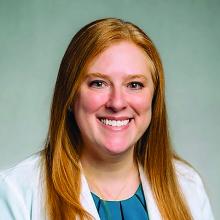Reducing Risk Factors
Dr. Bottomley said that there’s also been renewed effort to identify how to reduce cSCC risk in transplant recipients through recently developed consensus guidelines and a proposed decision framework developed by Dr. Bottomley and colleagues. The evidence will help clinicians have “greater confidence in making early interventions,” he said.
Currently, solid organ transplant patients are told to reduce sun exposure, in part because the majority of cSCCs occur in sun-exposed areas, such as the head and neck, and ultraviolet radiation leads to mutations. “Sun protection is critical,” Dr. Christensen said. That’s especially true in younger transplant recipients, who may have decades of sun exposure, he said.
The immunosuppressive medications also increase cancer risk, for a variety of reasons. One of the more-commonly used immunosuppressants in the past, azathioprine, is itself carcinogenic. Other antirejection medications, such as tacrolimus and mycophenolate, may also induce mutagenic changes that give rise to malignancies, according to the paper by Dr. Bibee, assistant professor of dermatology at Johns Hopkins, Baltimore.
Both Dr. Bibee, in her paper, and Dr. Arron, in an interview, noted that voriconazole, an antifungal used to prevent Aspergillus infection after lung transplant, has been associated with an increase in cSCC in lung transplant recipients.
In addition, immunosuppression essentially “blocks the body’s immune system from recognizing that there are abnormal cancerous cells present,” Dr. Arron, a dermatologist in private practice in Burlingame, California, told this news organization.
Previously, while at the High-Risk Skin Cancer Program at University of California, San Francisco (UCSF), Dr. Arron and others studied whether human papillomavirus (HPV) might play a role in spurring the development of cSCC formation in the immunocompromised. HPV is highly prevalent on the skin, but the virus found on the skin tends to be composed of lower-risk strains.
“In our research, we did not find any biologic mechanism by which this virus might be driving these cancers,” said Dr. Arron, although she said that some researchers “feel very strongly that HPV must be in some way a driver.”
Dr. Bottomley believes that HPV’s role has not been completely determined. The excess incidence of cSCC suggests a virus might be involved, as has been seen with excess risk of lymphoma in patients with Epstein-Barr virus, he said.
Some of his research is focusing on whether advanced immune aging is an independent risk factor for subsequent cSCC development in solid organ transplant recipients. The immune system undergoes changes as people age, and the speed of this process varies from patient to patient, which means immune age can be different from chronological age, said Dr. Bottomley. “We’re still exploring why immune aging should predispose you to cSCC,” he said.
When to Intervene?
Transplant patients are followed by dermatologists at regular intervals. But guidelines are not consistent on the recommended timing of those intervals.
Dr. Arron and colleagues in 2019 created a risk prediction module that recommended frequency of follow-up based on low, medium, high, or very high risk. The tool is available to clinicians in an app called SUNTRAC, or the Skin and Ultraviolet Neoplasia Transplant Risk Assessment Calculator.
A question that Dr. Arron said dermatologists and transplant specialists have wrangled with: How early can they intervene to prevent further lesions?
In the 2022 decision framework paper in Transplant International, Dr. Bottomley and dermatology colleagues from around the world attempted to better delineate when and how clinicians should intervene when a cSCC is first detected. That first cSCC “should be regarded as a ‘red flag’ heralding an increased risk of further skin cancers and possibly internal malignancies,” the authors wrote. That moment is “a key opportunity to proactively consider secondary preventive strategies,” they wrote, but noted that the best interventions and “their sequencing remain unclear,” indicating the need for further research.


